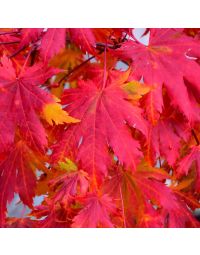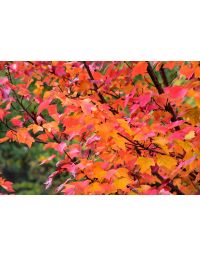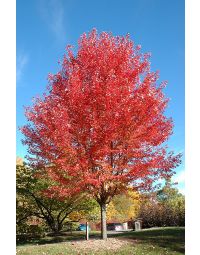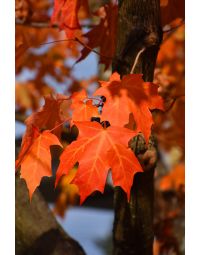Indigenous people of North America were the first to tap maple trees for that golden goodness. As for the who and how of its discovery, well that’s steeped in legend!

Image by thankful4hope from Pixabay
A few facts
- Pure maple syrup is only made on a commercial scale in North America.
- Maple syrup is generally produced in the states and provinces that surround the Great Lakes and the St. Lawrence River to the Atlantic Ocean.
- Maple sap is collected in the early spring, when temperatures get below freezing at night and above freezing during the day and the sap starts to move.
- Sometimes sap flows as early as January or as late as May, but in Minnesota, sap usually runs from about March 15 to April 20.
- The sap generally flows for 4 to 6 weeks, with the best sap produced early in the sap-flowing season.
- It takes approximately 40 gallons of maple sap from the trees to make one gallon of pure maple syrup.
- Nothing is added to the sap, only water is evaporated away, to make pure maple syrup.
- While many types of trees can be tapped for sap, maples have the highest sugar content.
- Maple syrup/sugar can be used to replace granulated sugar in some recipes.
Tapping a maple tree and collecting sap to make maple syrup is a fairly simple process but it does require time, patience and some essential tools, but oh that golden goodness is worth the wait!
Step 1: Identify Your Tree
All maple varieties will provide sap and are suitable for tapping.
- Sugar maple and black varieties typically produce the most sap.
- Look for trees 12 inches in diameter at a minimum.
- Use one tap on trees 12-20 inches in diameter.
- Two taps on trees 21-27 inches
- Three taps on trees over 28 inches in diameter.
- Look for healthy trees that receive direct sunlight.
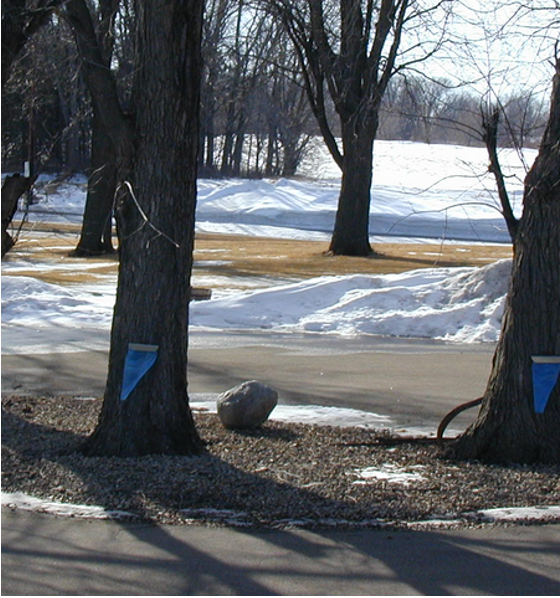
These are a homeowner’s Silver Maple trees
Step 2: Start with the Right Equipment
- Buckets with lids, spiles with hooks, and a proper sized drill bit.
- Another option is to use a simple spout with a Sap Sak holder and bag (as above). Bucket covers are important so rainwater or snowmelt doesn't dilute the sap collected.
- Tap your trees starting in late winter/early spring when nighttime temperatures are in the twenties and daytime temps reach the 40s.
- Always tap on the sunny side of the tree about 3 feet up.
- Drill your hole about 2 and half inches into the tree at a slight upward angle so the sap pours out more easily.
- The spile is the simple tapping device that you "tap" into the tree with a mallet. They need to have a hook so you can hang a bucket.
- Check the sap level daily.
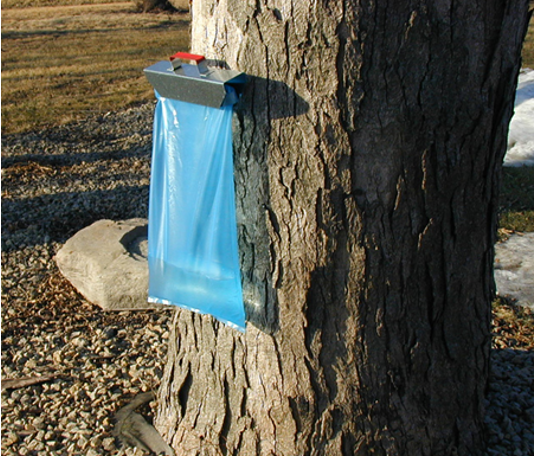
Step 3: Turning Sap into Syrup
- Store your collected sap in a large food grade container until you're ready to turn it into syrup.
- Make sure you keep it in an area that remains below 40-45 degrees to avoid spoilage.
- Use a funnel with a strainer and cheesecloth to filter out foreign materials as you transfer the sap to the food grade container. You could also use a skimmer ladle.
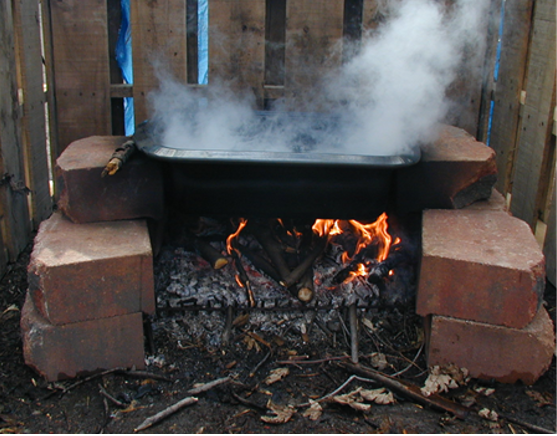
Boil the sap outdoors – it's sticky! Seven gallons took 6 hours to boil down. The smell was amazing.
- When you're ready to start the boiling process, you'll need a hydrometer (a specialized and fragile instrument used to measure the density of your syrup) and testing cup. Note: For small batches you can use a candy thermometer.
- Sap becomes syrup at 7 degrees above the boiling point of water which is about 212 degrees F depending on elevation.
- You must be very attentive when boiling sap, you do not want it to burn.
- When your syrup reaches the desired consistency, you can put it into syrup bottles. Filter it one more time through maple syrup filters to remove sediment.
Gertens has a complete step-by-step guidebook plus a complete starter kit available with all the basic supplies you'll need to get your maple syruping/sugaring hobby going! There’s also more on Maple Syruping from the MN DNR.
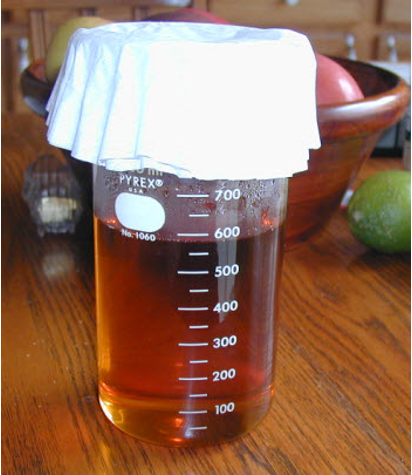
Grade A amber – outstanding!
The experts at Gertens are always available to answer your questions!


